
Reflecting on cinematic history, I’d say even among the most discerning cinephiles, the iconic movie Jaws stands tall as one of the most esteemed films ever made.
Fifty years ago, this masterpiece graced our silver screens. At that time, Steven Spielberg was merely a promising novice in the grand Hollywood scene, having only directed two feature films prior to Jaws. Yet, the young director fearlessly plunged into the project.
As he himself put it in the 2010 documentary, Jaws: The Inside Story, “This would be both the most challenging and the most rewarding experience of my career.”
The production of this movie was far from a leisurely day at the shore. As Spielberg navigated the challenges, he confronted difficulties such as filming in open waters, managing an expanding budget and schedule, and dealing with frequent breakdowns of his titular beast – the mechanical shark.
In the 1997 documentary In the Teeth of Jaws, Richard Dreyfuss, who starred alongside Roy Scheider and Robert Shaw, remarked, “They didn’t have a clue about how to make this movie, and yet they started principal photography. That’s a perfect recipe for making a successful film.
The unique aspect of this setup was that it heightened the tension in the movie since its appearance was unpredictable. As Spielberg himself stated in a 1992 episode of 60 Minutes, “It kept viewers guessing about where the shark might appear next.” Instead of displaying the shark frequently as initially planned, he focused more on conveying fear through people in water – showing their legs kicking, camera movement, or just the surface of the water with nothing beneath, which transformed the movie into a suspenseful experience rather than just a horror film.
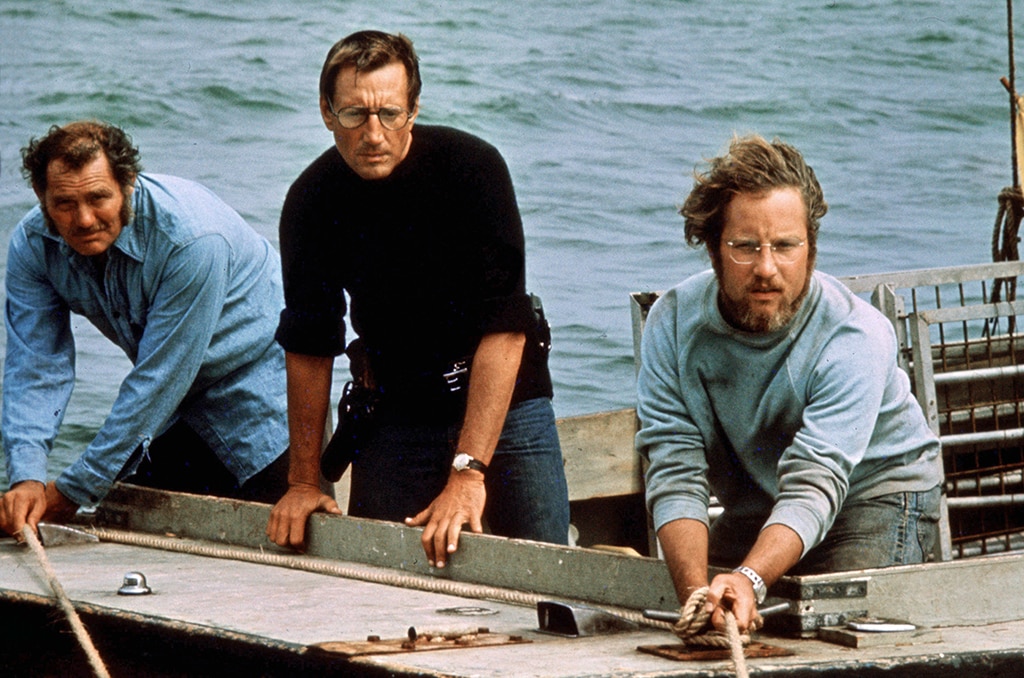
It’s no secret that viewers were thoroughly captivated by it. The release of “Jaws” on June 20, 1975 not only shattered box office records but also garnered three Academy Awards. If the mechanical shark had functioned properly, as Steven Spielberg suggested, the movie might not have enjoyed such unprecedented success.
To celebrate this cinematic milestone, play the iconic “Jaws” theme song (dun-dun, dun-dun) and sink your teeth into these fascinating details about the film.
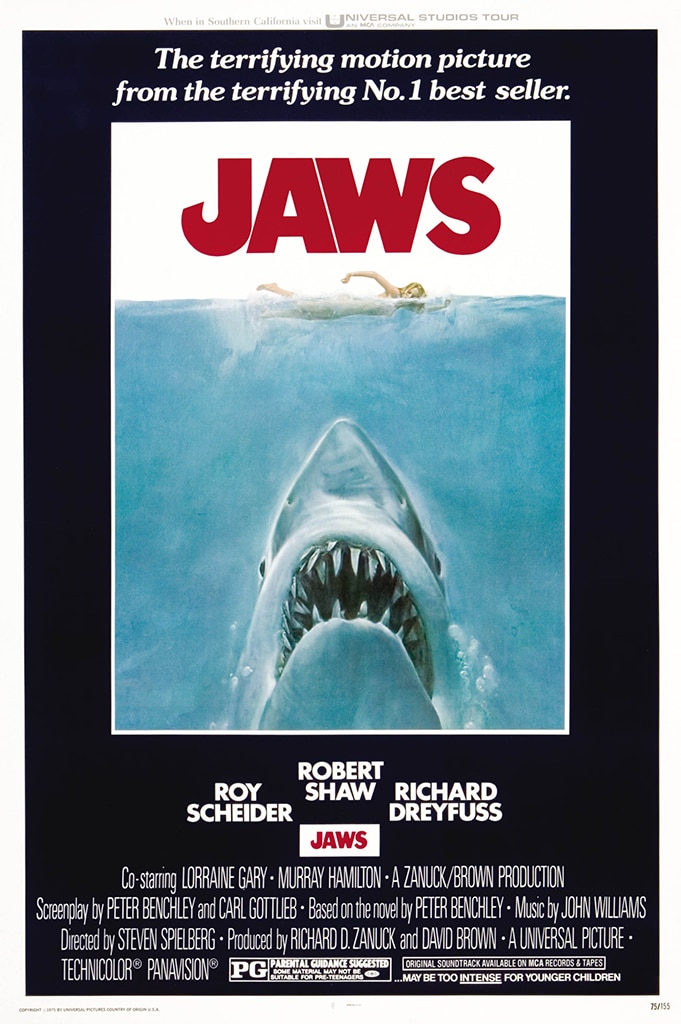
1. The film was adapted from Peter Benchley’s 1974 novel with the same title. Initially, the author didn’t anticipate the story to be a successful book, let alone one of the most enduring films ever made.
“I thought they couldn’t make a movie about it because the technology for creating a great white shark was not advanced enough,” Benchley stated in the 2007 documentary ‘The Shark Is Still Working’. “I had no idea this would become a success beyond just being published, until the film opened and the paperback started selling millions of copies. Even then, who could have foreseen that it would continue to be relevant?”
2. Interestingly, the iconic movie poster depicting a woman swimming peacefully while a shark lurks beneath was originally used for the paperback cover.
“Oscar Dystel, who was the head of Bantam Books, lamented that he didn’t sell it to us,” said Jaws producer David Brown in the doc. “He could have sold us the artwork, but he gave it to us as a promotional item.”
3. Regarding how Benchley came up with the title ‘Jaws’, here’s an interesting tidbit:
“With only 20 minutes remaining before the book went into production, I sat with my editor at a restaurant in New York and said, ‘We don’t agree on anything except one word: Jaws. Call it Jaws,'” he said in ‘In the Teeth of Jaws’. “When he asked what it meant, I replied, ‘I have no idea, but at least it’s short.'”
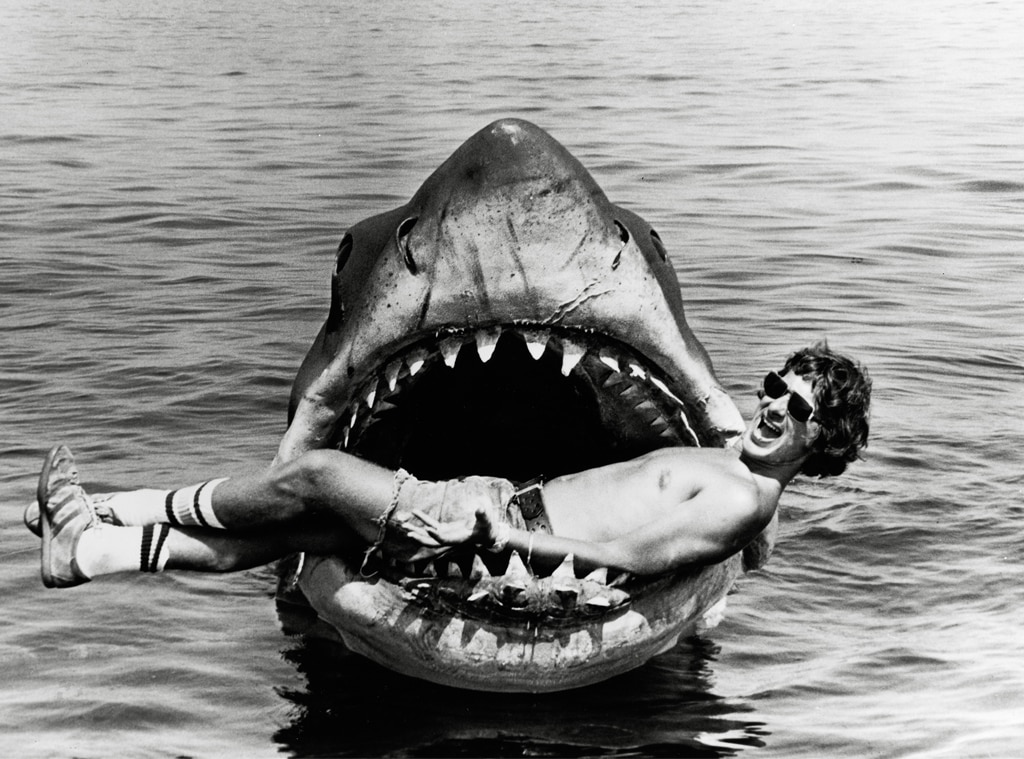
4. Although Jaws propelled Steven Spielberg into unprecedented stardom, it wasn’t initially his project. The filmmaker showed interest in directing the movie after producer Richard Zanuck asked him to review the script.
“I walked into the office on Monday,” Spielberg recounted in the 2010 documentary Jaws: The Inside Story, “and I remember telling Dick Zanuck, ‘If anything happens with the director you’ve assigned this project to, and if for some reason he backs out, I would be thrilled to tell the story.'”
He ultimately got his chance when the first director ran into trouble by confusing a shark with a whale during a meeting.
5. Interestingly, Spielberg almost declined the offer. As revealed in Jaws: The Inside Story, he was initially keen on directing the 1975 film Lucky Lady, but former president of Universal Studios Sid Sheinberg, persuaded him to take on Jaws instead.
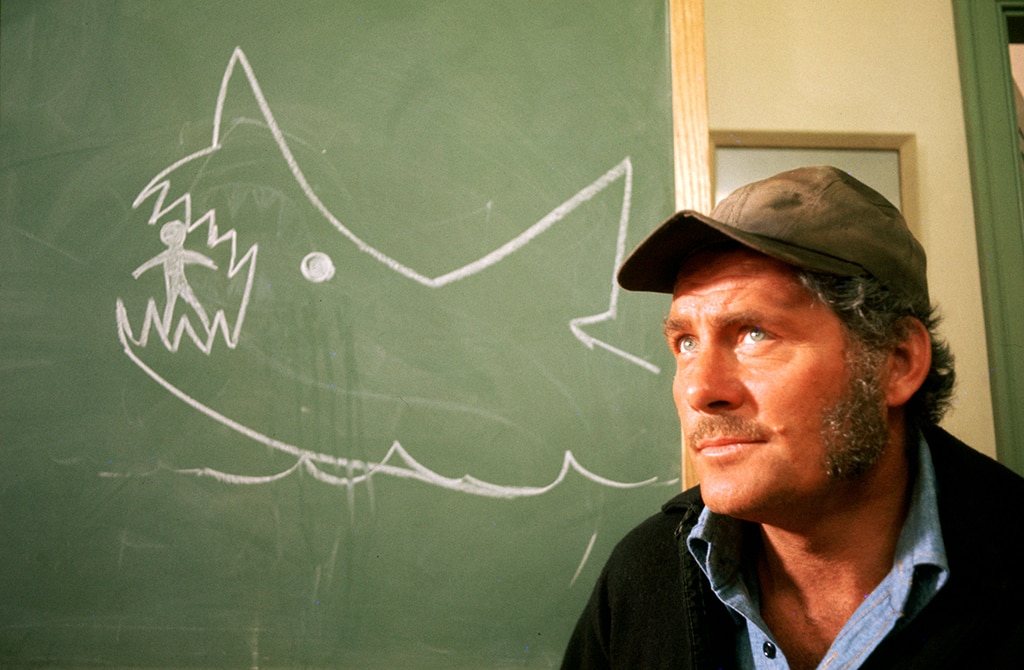
6. Initially, Steven Spielberg had another actor in mind to portray shark hunter Quint, namely Lee Marvin. However, as he was enjoying a fishing vacation at the time, Marvin declined the offer. The team then considered Sterling Hayden, but his financial issues with the government made him an unsuitable candidate for the role. Eventually, Robert Shaw was suggested by Zanuck and Brown, who had previously worked with him in “From Russia With Love” and “A Man for All Seasons”.

7. In the documentary, Gottlieb disclosed that the studio initially proposed Jan-Michael Vincent for the role of marine biologist Matt Hooper in Jaws, but Spielberg was determined to cast Richard Dreyfuss. However, securing Dreyfuss wasn’t a walk in the park.
As recounted in Jaws: The Inside Story, Dreyfuss recalled, “He asked me if I wanted the role.” To which he replied, “No.” Spielberg then inquired, “Why?” to which Dreyfuss responded, “Well, that’s going to be a pain to film. I’m lazy and I’d rather just watch it than make it.” And so, he declined the offer.
Concerned about the reception of his film The Apprenticeship of Duddy Kravitz, Dreyfuss eventually reached out to Spielberg and pleaded for the part in Jaws.
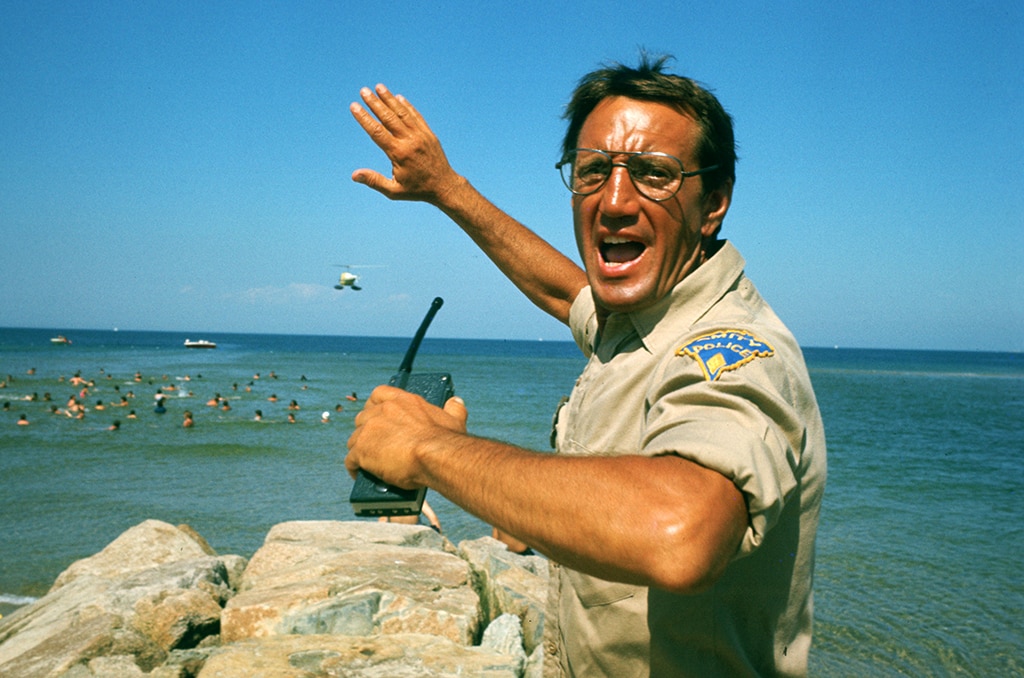
8. At a party, Spielberg approached Roy Scheider who was sitting alone and asked him if he was alright. As it turned out, this was none other than the actor Roy Scheider. In his memoir, “Jaws: The Inside Story,” Spielberg recounted this encounter. At that time, Spielberg mentioned to Scheider, who had already starred in “The French Connection,” about his struggles finding an actor to play Chief Brody in “Jaws.” He detailed how he had already spoken to several other actors and had decided against them. However, Scheider, showing interest, suggested himself for the role and landed it.
9. Though Scheider eventually landed the role, Charlton Heston was also contending for it. Nevertheless, Spielberg felt that Heston, known for his roles in films like “The Ten Commandments,” “Ben-Hur,” and “The Agony and the Ecstasy,” might have been too well-known, and audiences might not empathize with him. As he stated in “Jaws: The Inside Story,” he believed it wouldn’t be fair for Charlton Heston to play the shark role because the shark likely wouldn’t survive the first act.
10. As a connoisseur of all things lifestyle, let me express my gratitude to Roy Scheider for the timeless quote, “We need a bigger boat,” which he spontaneously uttered on set, a moment immortalized in the cinematic masterpiece ‘Jaws’. I can’t help but feel pride as a writer for his improvisation. It’s moments like these that make film history truly extraordinary.
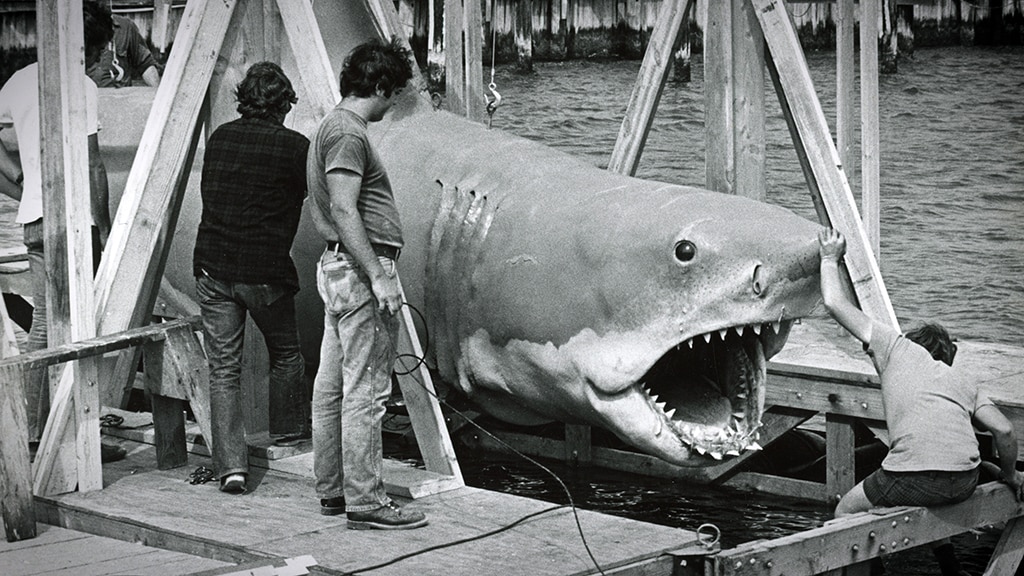
- 11. As for the mechanical shark used to portray the seafaring creature, Gottlieb revealed in In the Teeth of Jaws that Spielberg named him Bruce after his lawyer Bruce Ramer.
12. In fact, more than one mechanical shark was used in the making of the movie.
“Bruce the shark was a compendium of three or four or five mechanical devices,” Gottlieb added in the doc. “There was a left-to-right shark, there was a right-to-left shark and there was a shark sled” that showed the fins.
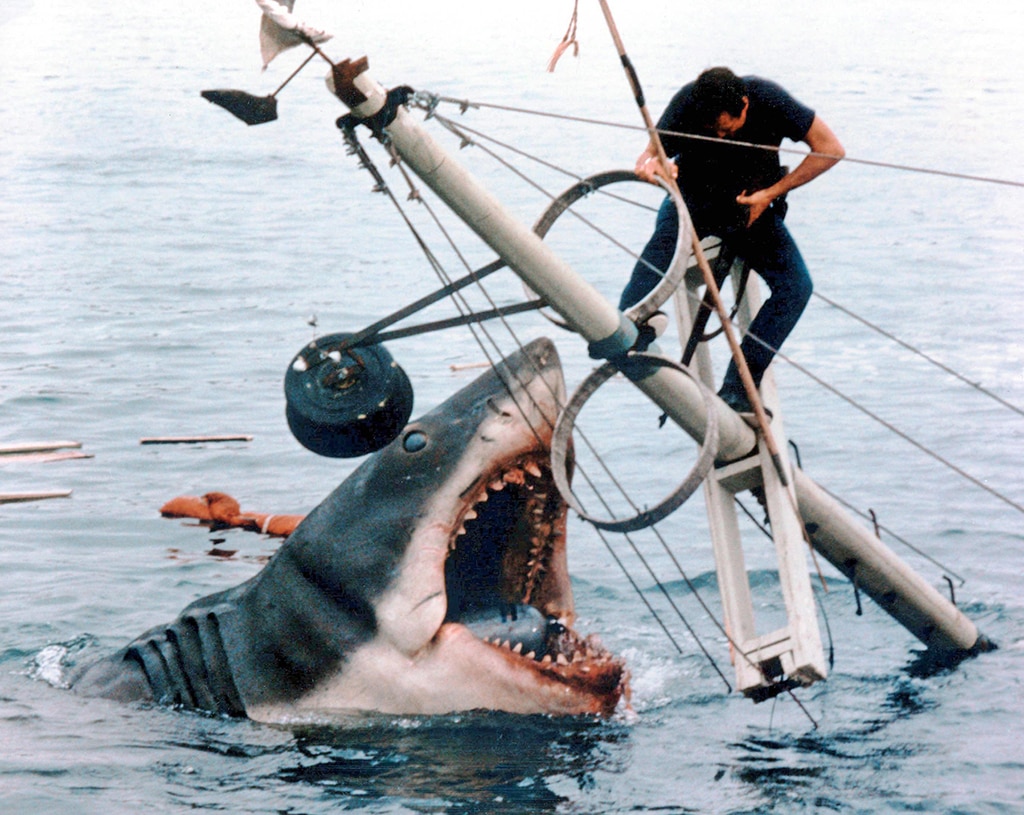
13. (As a lifestyle expert) When it comes to the size of those mechanical sharks, you might be curious. The Academy of Motion Picture Arts and Sciences disclosed that one of these shark molds measured an impressive 25 feet in length and weighed a hefty 1,208 pounds. For comparison, the largest great white sharks typically don’t exceed 20 feet, with most being smaller.
14. (As a lifestyle expert) Before filming, the sharks had been tested in fresh water, but things took an unexpected turn when they encountered the salty ocean. There were numerous technical glitches, and Spielberg was compelled to adapt. As Dreyfuss stated in “Jaws: The Inside Story,” the shark was a constant challenge, making it impossible for Spielberg to shoot the film as originally planned. Rather than focusing on numerous shots of the shark, Spielberg subtly suggested its presence by capturing swimmers’ kicking legs, ripples on the water’s surface, and barrels being dragged across the waves. Intriguingly, viewers don’t even get a full view of the shark until an hour and 21 minutes into the movie, as reported by Mental Floss.
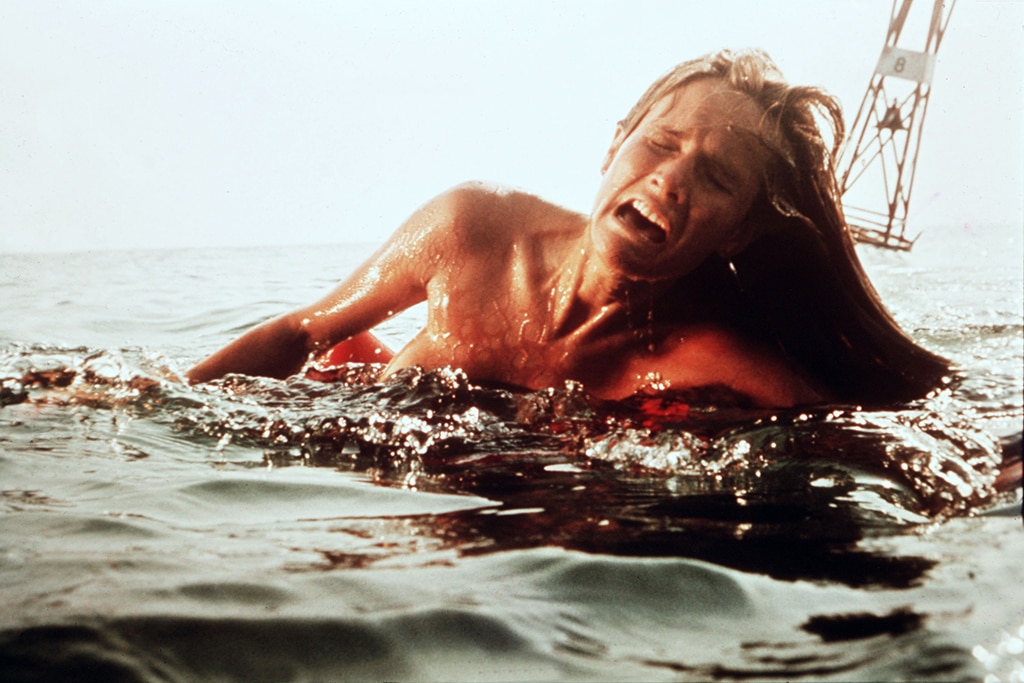
15. A striking moment occurs when a character named Chrissie (Susan Backlinie) is attacked by the shark. To convey this attack effectively, Spielberg explained in ‘Jaws: The Inside Story’, they used a technique where ten men pulled her left and right on opposite ropes towards the shore. This movement created the illusion of an actual shark attack.
16. The music played a significant role in building tension, but when Spielberg first heard John Williams’ now-iconic theme song for ‘Jaws’, it didn’t quite meet his expectations. As he recounted in ‘The Making of Jaws’, “I was expecting something unusual and melodic,” the director said, “something eerie and otherworldly, almost like music from outer space or the depths of the ocean.” However, upon hearing it, Spielberg laughed, thinking Williams was joking. But he assured Spielberg, “This is the theme for ‘Jaws’.” Nevertheless, according to Spielberg, Williams found a signature melody for the entire movie through that song.
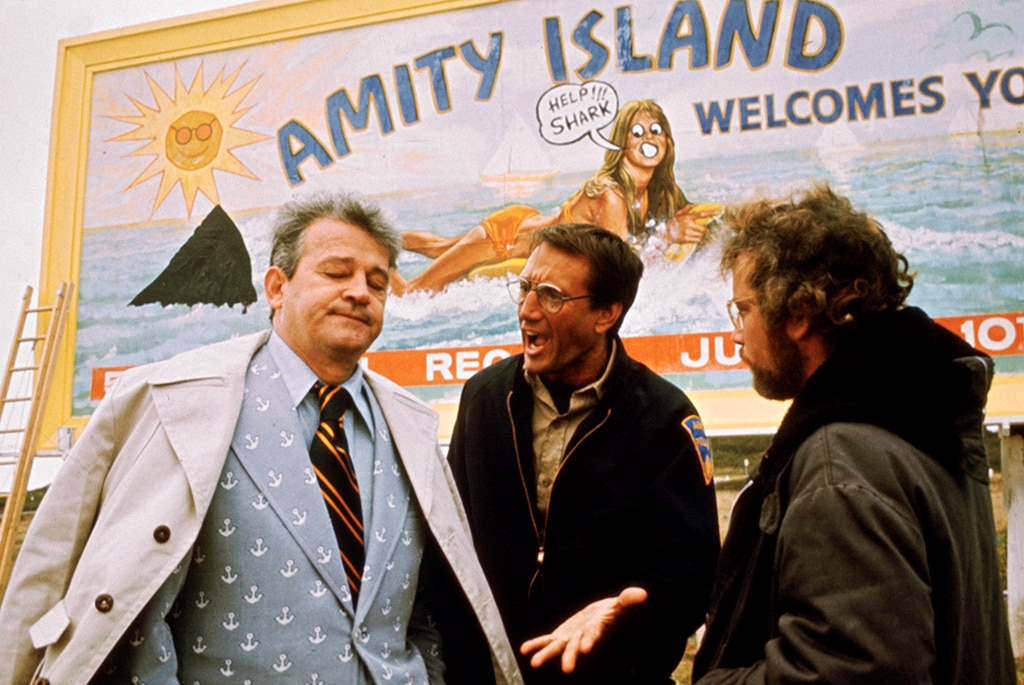
17. Although the movie is based on the fictional New England town of Amity Island, it was primarily filmed in Martha’s Vineyard, Massachusetts. Intriguingly, some local residents even appeared as extras in the film.
18. Interestingly, during the final day of shooting, Spielberg chose to depart early. As Dreyfuss recounted in “Jaws: The Inside Story”, Spielberg was concerned that the crew might prank him by pushing him into the water. This apparently became a signature move of Spielberg’s, as he often doesn’t shoot the final shot himself.
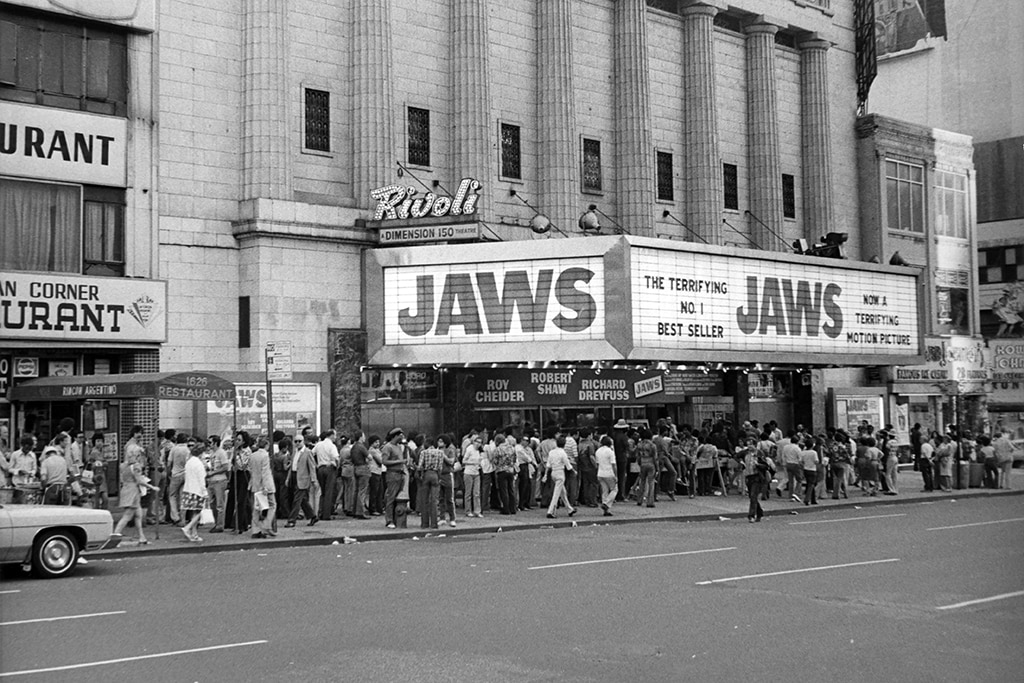
19. As detailed in “Jaws: The Inside Story”, the iconic scene showing Ben Gardner’s (Craig Kingsbury) head floating through a boat hole was actually filmed in editor Verna Fields’ California pool. Spielberg utilized milk to give the water a more oceanic appearance.
20. Without a doubt, “Jaws” left an indelible impact. According to Guinness World Records, it is acknowledged as the first-ever summer blockbuster and was the first film to gross over $100 million at the U.S. box office. Additionally, it garnered three Oscars for editing, sound, and original score. However, it missed out on the Best Picture award, which went to “One Flew Over the Cuckoo’s Nest”.
Read More
- We Loved Both of These Classic Sci-Fi Films (But They’re Pretty Much the Same Movie)
- Masters Toronto 2025: Everything You Need to Know
- Street Fighter 6 Game-Key Card on Switch 2 is Considered to be a Digital Copy by Capcom
- The Lowdown on Labubu: What to Know About the Viral Toy
- ‘The budget card to beat right now’ — Radeon RX 9060 XT reviews are in, and it looks like a win for AMD
- Mario Kart World Sold More Than 780,000 Physical Copies in Japan in First Three Days
- Valorant Champions 2025: Paris Set to Host Esports’ Premier Event Across Two Iconic Venues
- Microsoft Has Essentially Cancelled Development of its Own Xbox Handheld – Rumour
- Gold Rate Forecast
- Forza Horizon 5 Update Available Now, Includes Several PS5-Specific Fixes
2025-06-20 10:17